When To Injure Your MC
Hello! I have a plan to get my main character injured by the antagonist. But, since the mc lives, is it better to describe the danger or get the mc injured so he (and the audience) would have no questions about the seriousness of the antagonist?
When to Injure Your MC
If you ask many writers why they beat their characters up so much, the immediate playful answer might be “Because it’s fun!” but there is (or should be) some strategy involved in when and how you injure your main character. So before I answer the question directly, I’m going to discuss these strategies a little.
Reasons to Injure a Character:
1. To create additional challenges in a high-stakes situation
If a character’s journey has been fairly easy to far, an injury is one way to complicate things. But the only way it works is if the injury lasts long enough to really hinder them.
For instance, if you have a character that has the magical ability to heal others, then a character being injured and then healed two minutes later doesn’t create much of a challenge, nor does it heighten suspense since the character’s life was never truly in danger. So an injury that’s introduced to complicate things should take some time to recover from, and it’s usually more realistic anyway, especially when you consider the tortuous stuff we do to our MCs sometimes.
However, if you do have a healer character, and they’re currently separated from the character you injure, then a challenge is immediately presented. The injured character has to continue their journey through the injury, to either reach their destination or be reunited with the healer that can help them.
2. To foreshadow a future situation
The situation I described above, where a character is injured and then healed two minutes later, could work, if it’s being used to foreshadow the second situation I described, where the two characters are separated. Showing the healer in action early in the story can foreshadow a later complication when the healer is unable to assist their companion, whether it’s due to a separation or a sudden loss of powers.
It can also work as exposition to show the way the healer’s power works.
3. To show the antagonist’s maliciousness
The anon above suggested they injure their character to show the antagonist means business, and that definitely qualifies as a good reason to injure a character.

See, when an antagonist hurts a character - and not just an MC, but anyone - they show that they don’t care who gets in their way. They want what they want, and in their opinion, the ends justifies the means. Even when a character isn’t necessarily in their way, and they do it for pleasure, it tells a reader a great deal about the antagonist’s psyche, and how far they’ll go to further their own agenda.
My only caution here is to be wary of how often you’re using this reason. Often times it becomes easy to justify an antagonist’s plan by saying “They’re evil and they enjoy torturing people.” But villains who are evil just for the pure enjoyment of it grow uninteresting and predictable quickly. So despite the pleasure they get out of hurting people, they must have some greater scheme in front of them. Some ultimate gain that they’re hoping to achieve. A combination of these two things can breed a fascinating antagonist.
4. To deepen a character bond or relationship
Injuries or illness are great opportunities to write a dynamic where one character is taking care of another, showing how close the two characters are, and how attentively they’ll care for the other. But this dynamic is most compelling when it’s a reversal, such as a little brother taking care of an older one, or when someone who the protagonist has built up to be invincible is suddenly sidelined and needs the protagonist’s help.
Like the previous reason, i would just be careful how frequently this occurs. Situations like these are more effective when they’re big, and they last long term, rather than several smaller instances where a character keeps getting hurt and cared for.
There may be other reasons out there to justify injuring a character that I haven’t thought of here, but I can surely tell you one reason not to:
Avoid injuring a character purely for the fun of it.
Now listen, what you do in your own private writing universe is your own business, and if you want to put your characters through hell because it’s fun, I commend you for finding so much joy in the process of writing and I encourage you to keep at it. But when it comes to finding an audience, and telling a cohesive, well-paced, well-plotted story, you gotta start considering each move you make as a writer, and ask yourself if each plot point needs to be there.
Back to the anon…
Now that I’ve gone into all this detail, let me get back to the specific question that the anon asked. Since the character ultimately lives, is it better to just show the possible danger, or to actually have the antagonist injure them to show they’re serious?
My answer to you would be that you could injure the character, since your reasoning falls within the reasons I listed here (reason #3), and it would be even better if it qualified for two reasons, such as delaying their progress to achieve their goal (reason #1) or repairing a strained relationship when a companion must take care of them (reason #4).
Your argument that the character lives (so why bother?) ignores the need for conflict in a story. Readers appreciate conflict, as long as there are logical reasons for it, and if you consider these reasons I discussed, you should be in great shape.
However, I think that you could show your antagonist’s malicious intentions without injuring the character, if you felt the injury would be too much for an already conflict-heavy plot. The antagonist might show anger/violence towards the people working for them (out of frustration), or even to innocent bystanders, or other minor characters whose fates we’re not as tied up in. So I think there are still options for you if you wanted to avoid an injury.
-Rebekah
More Posts from Othermanymore and Others

Bosco Verticale (Vertical Forest) is a pair of residential towers in the Porta Nuova district of Milan, Italy, between Via Gaetano de Castillia and Via Federico Confalonieri near Milano Porta Garibaldi railway station. They have a height of 110 metres (360 ft) and 76 metres (249 ft) and will host more than 900 trees (approximately 550 and 350 trees in the first and second towers respectively) on 8,900 square metres (96,000 sq ft) of terraces. Within the complex is also an 11-story office building; its facade does not host plants.
The towers were designed by Boeri Studio (Stefano Boeri,Gianandrea Barreca and Giovanni La Varra). It also involved input from horticulturalists and botanists. (Source)
imagine if the oceans were replaced by forests and if you went into the forest the trees would get taller the deeper you went and there’d be thousands of undiscovered species and you could effectively walk across the ocean but the deeper you went, the darker it would be and the animals would get progressively scarier and more dangerous and instead of whales there’d be giant deer and just wow





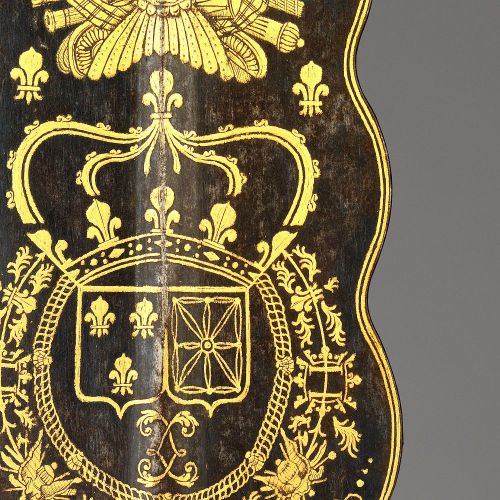
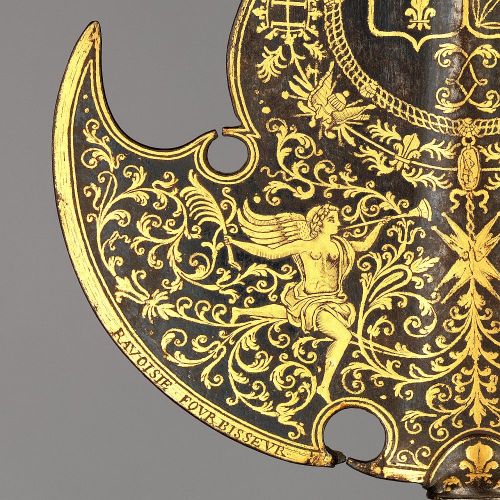
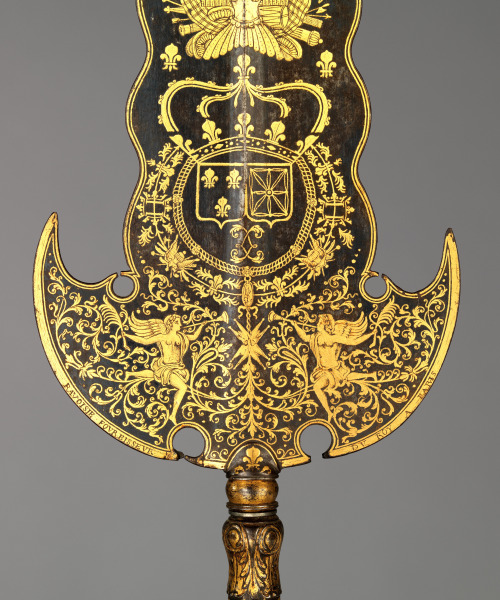
Partisan Carried by the Bodyguard of Louis XIV (1638–1715, reigned from 1643)
Dated: circa 1678–1709
Sword cutler: inscription probably refers to Bonaventure Ravoisie (French, Paris, recorded 1678–1709)
Culture: French, Paris
Medium: steel, gold, wood, textile
Measurements: overall length 94 1/8 inches (239 cm); length of head 22 9/16 inches (57.3 cm); width of head 6 ½ inches (16.5 cm)
Inscription: decoration on this partisan features a sunburst surmounted by Louis XIV’s motto, NEC PLURIBUS IMPAR (Not equaled by many); inscribed along the curved lower edge on both sides of the blade: RAVOISIE FOVRBISSEVR DV ROY A PARIS
Provenance: Ex coll.: de Dino
This partisan, along with two like it also in the Metropolitan Museum’s collection (acc. nos. 14.25.454, 04.3.64), are thought to have been carried by the Gardes de la Manche (literally, “guards of the sleeve,” indicating their close proximity to the king), an elite unit of the bodyguard of Louis XIV.
This example (along with 04.3.64) bears the king’ motto and sunburst above the crowned arms of France and Navarre, which are encircled by the collars of the royal orders of the Holy Spirit and Saint Michael. It is inscribed RAVOISIE FOVRBISSEVR DV ROY A PARIS, probably referring to Bonaventure Ravoisie, a royal cutler recorded between 1678 and 1709.
The other partisan (14.25.454) is from a small group designed by Jean Bérain the Elder (1637–1711) for the marriage of Louis’s niece Marie-Louise d'rléans to Carlos II of Spain in 1679. The decoration features a sunburst surmounted by the king’s motto, ‘NEC PLURIBUS IMPAR’ (’not equalled by many’). Beneath, the sun god Apollo is being crowned with laurel by the winged figure of Fame. The sunburst and Apollo were favourite symbols of Louis XIV, the self-styled Sun King.
Source: Copyright © 2016 The Metropolitan Museum of Art
My Name Is Cow: Masterpost(?)
(The first few stanzas covered by i-ddpej here.)
my name is Cow, and wen its nite, or wen the moon is shiyning brite, and all the men haf gon to bed - i stay up late.
i lik the bred.
my name is Dog, and wen its tea, i hope they giv sum foode to me - i hope they shair befor its gon - they never do.
i dont get non.
my name is Cow, and this is tru - my caynine frend, its up to yu. so just be brayve and smart insted - and be like me.
i lik the bred.
(Bridge, dividing original content from fan content: First Of All How Dare You)
my name is Cat no cares have i be it sun or moone that lytes the sky by night i prowl by day i stretch i salute u, Cow
u bold old wretch
O clevr Cat Who roams the barn I promys you I men no harm As yor a friend With stelthy tred I invyte you
To lik sum bred.
I am the bred With yeast I ryse Mine amber crust Doth pleas thyn eys
The cow and cat Whos tongues delit Upon my crust Both noon and nite
Are easy stop’d By dor and slat Perhaps the baker Noes not that?
What do angels actually look like per the bible?
Well, according to Ezekiel 1 they might look something like this…
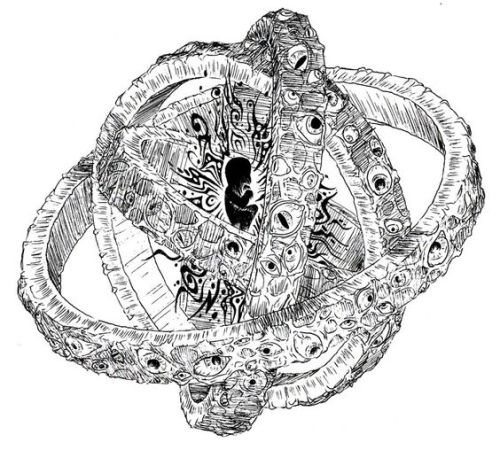
According to Daniel 10 something like this…

According to Isaiah 6…
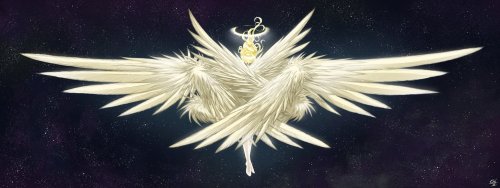
In Ezekiel 10…
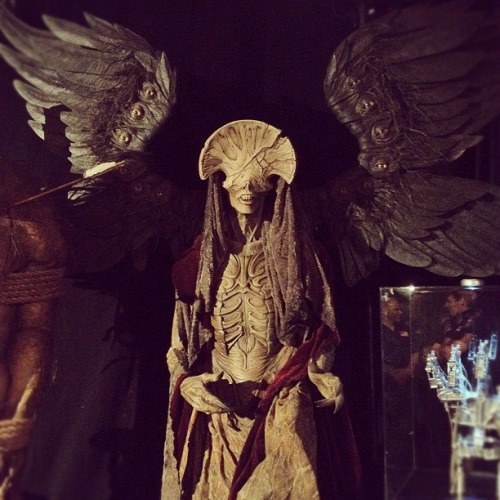
Again in Ezekiel 10…
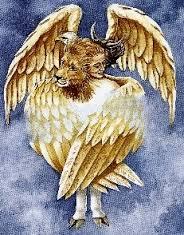
Basically, when the people writing Scripture tried to describe what they saw when they saw an angel… they run into the end of their imagination… they can never quite seem to fully explain it because they had trouble even comprehending what they saw, let alone being able to describe it to someone else.


Story Lines
This comic was inspired by Kurt Vonnegut’s classic lecture about the shapes of stories. It appears in the most recent issue of The Southampton Review.
Posters are available at my shop.
-
 heckcareoxytwit liked this · 1 year ago
heckcareoxytwit liked this · 1 year ago -
 darkestbeforethedawn16 liked this · 4 years ago
darkestbeforethedawn16 liked this · 4 years ago -
 ameloni123 liked this · 4 years ago
ameloni123 liked this · 4 years ago -
 jelly-fishs-stuff liked this · 4 years ago
jelly-fishs-stuff liked this · 4 years ago -
 writinggshitt reblogged this · 4 years ago
writinggshitt reblogged this · 4 years ago -
 thespectacularsleepyturtle liked this · 4 years ago
thespectacularsleepyturtle liked this · 4 years ago -
 wordy-grannies reblogged this · 5 years ago
wordy-grannies reblogged this · 5 years ago -
 thebutterflywrites reblogged this · 5 years ago
thebutterflywrites reblogged this · 5 years ago -
 jesdan1031 liked this · 5 years ago
jesdan1031 liked this · 5 years ago -
 omgflameglowme reblogged this · 5 years ago
omgflameglowme reblogged this · 5 years ago -
 omgflameglowme liked this · 5 years ago
omgflameglowme liked this · 5 years ago -
 micahcharlson liked this · 5 years ago
micahcharlson liked this · 5 years ago -
 fictional-mens-hoe liked this · 5 years ago
fictional-mens-hoe liked this · 5 years ago -
 xxncxx2325 reblogged this · 5 years ago
xxncxx2325 reblogged this · 5 years ago -
 almondkittie liked this · 5 years ago
almondkittie liked this · 5 years ago -
 ravenmind2001 liked this · 5 years ago
ravenmind2001 liked this · 5 years ago -
 meridianrose reblogged this · 5 years ago
meridianrose reblogged this · 5 years ago -
 stuckinanalternateuniverse liked this · 5 years ago
stuckinanalternateuniverse liked this · 5 years ago -
 study-with-stardust liked this · 5 years ago
study-with-stardust liked this · 5 years ago -
 oreo-sama-sugoi liked this · 5 years ago
oreo-sama-sugoi liked this · 5 years ago -
 shypancakes reblogged this · 5 years ago
shypancakes reblogged this · 5 years ago -
 shypancakes liked this · 5 years ago
shypancakes liked this · 5 years ago -
 a-blog-about-anything reblogged this · 5 years ago
a-blog-about-anything reblogged this · 5 years ago -
 a-blog-about-anything liked this · 5 years ago
a-blog-about-anything liked this · 5 years ago -
 darkth117 liked this · 5 years ago
darkth117 liked this · 5 years ago -
 writingonesdreams reblogged this · 5 years ago
writingonesdreams reblogged this · 5 years ago -
 purpledragonrp reblogged this · 5 years ago
purpledragonrp reblogged this · 5 years ago -
 sapphirenova reblogged this · 5 years ago
sapphirenova reblogged this · 5 years ago -
 sapphirenova liked this · 5 years ago
sapphirenova liked this · 5 years ago -
 zbee5050 liked this · 6 years ago
zbee5050 liked this · 6 years ago -
 stylish-cucumber liked this · 6 years ago
stylish-cucumber liked this · 6 years ago -
 mare-bear22 liked this · 6 years ago
mare-bear22 liked this · 6 years ago -
 querenciaa-blog liked this · 6 years ago
querenciaa-blog liked this · 6 years ago -
 alialink liked this · 6 years ago
alialink liked this · 6 years ago -
 treadonserpants liked this · 6 years ago
treadonserpants liked this · 6 years ago -
 nightmarewriting reblogged this · 6 years ago
nightmarewriting reblogged this · 6 years ago -
 mrderscnes liked this · 6 years ago
mrderscnes liked this · 6 years ago -
 wanderlustwordsdust-blog reblogged this · 6 years ago
wanderlustwordsdust-blog reblogged this · 6 years ago -
 luigi11790 liked this · 6 years ago
luigi11790 liked this · 6 years ago -
 lochness128 liked this · 7 years ago
lochness128 liked this · 7 years ago -
 littletimorousbeastie liked this · 7 years ago
littletimorousbeastie liked this · 7 years ago -
 laysean87 liked this · 7 years ago
laysean87 liked this · 7 years ago







